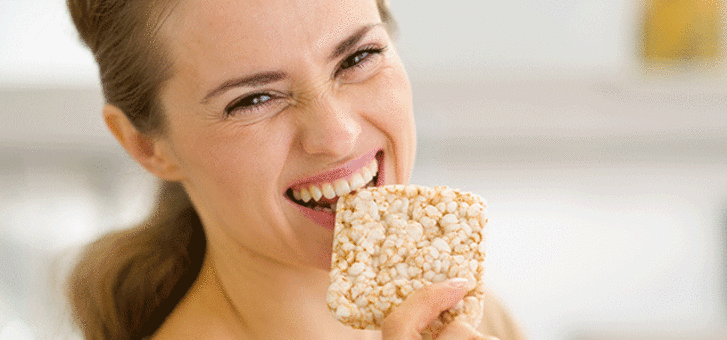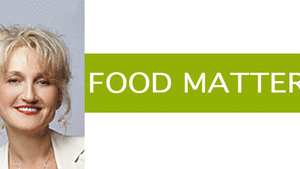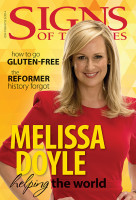Depressed or feeling tired all the time? Angela Zugic suggests the cause may be hiding in your food.
Many will remember a time when those on gluten-free diets were regarded with passing curiosity or even disdain. But today, even small grocery stores in tiny country towns have dedicated gluten-free shelves in their fridges. Some pizza stores even offer gluten-free crust!
Then there are those who have been eating wheat bread for their entire lives who now find themselves with diagnoses that put gluten products on the condemned list.
The evidence is showing that the move toward gluten-free is not simply a fad. Dr Harold Hin, a GP from Banbury in Oxfordshire, England, chose to blood-test the first 1000 patients that came into his office complaining of symptoms that might suggest coeliac disease, such as anaemia or feeling tired all the time. Of the 1000, 30 tested positive and subsequently were proven to be coeliacs by further tests.
“Coeliac disease can masquerade as another illness and unless you think of it, you’re going to miss it,” he told UK newspaper The Guardian. “Most coeliacs will have anaemia—often for a very long time—and they’ll be tired and depressed. But because there are many causes of anaemia, the most common being heavy periods, people don’t think of malabsorption. You get the situation where women have had hysterectomies because they’ve had heavy periods and it’s only because the anaemia doesn’t settle that you discover they have coeliac disease.”
Hin is also of the opinion that anyone with Type 1 diabetes or thyroid disease should get themselves tested for coeliac disease.
Using a new testing approach, Dr Jason Tye-Din, a gastroenterologist at the Royal Melbourne Hospital, found to his surprise that potentially one in 60 Australian women and one in 80 Australian men were affected by coeliac disease.
Standard high-risk symptoms are anaemia, digestive issues such as flatulence, bloating, abdominal pain, constipation, diarrhoea, osteoporosis, auto-immune disease, weight loss and infertility. Having a first-degree relative with confirmed coeliac disease increases the likelihood too.
Coeliac And More
It’s not just coeliac disease that can cause gluten intolerance. Dr Rodney Ford, a paediatric gastroenterologist, believes that gluten harms more people than just those who have coeliac disease.
“Gluten will do several things. In people with the appropriate genetics, it will stimulate villous atrophy and coeliac disease. It also will act as a neurotoxin in various ways,” he says. “Gluten can also trigger auto-immune diseases—about one in four people develop an auto-immune disease. It’s been shown that gluten is part of that trigger.”
Ford published a study in 2009 stating his case for a gluten syndrome. He believes that gluten intolerance can present neurological symptoms such as depression, behavioural issues and even irritability in children. Failure to thrive, reflux and eczema are childhood problems that he also connects to gluten sensitivity.
A recent study of the genetics of 2500 Australians, published in medical journal BMC Med in August 2013, found that over 50 per cent of the population would have the genetic propensity to develop coeliac disease.
Another study published in July 2013 draws a connection between antibiotic use and subsequent coeliac disease. The more research that is done, the more we will know.
In the meantime, it isn’t just those who tested positive to coeliac disease who are choosing to go gluten-free. Tye-Din believes that 10 per cent of the Australian population eat gluten-free even though only 1 per cent have been diagnosed as coeliac.
Getting Started On Gluten-Free
Changing from a diet centred on wheat products such as bread, pasta and pastries initially can be overwhelming. Eliminating gluten involves scrutinising labels and sourcing grains that may not be common.
Gluten is present in wheat, rye, barley and oats. Corn, though not containing gluten, has a protein that is similar to gluten, so it can be still a no-no for the particularly sensitive. And medication and vitamin supplements may contain starch fillers that are derived from wheat.
Grains that are generally considered safe are millet, amaranth, rice, quinoa, buckwheat (which is not related to wheat) and sorghum. Other products that are coming on to the market are coconut flour and chestnut flour. Tapioca flour is added to flour mixes to achieve something similar to what gluten does.
Rolled oats, the long-time staple for many, can be replaced by rolled quinoa and rice flakes. Taste and texture are obviously not going to be the same but users have found them to be satisfactory replacements.
Some gluten-free recipes rely on eggs for their binding quality. As a substitute, vegans have found that linseed works particularly well in combination with arrowroot flour.
Quinoa is very nutritious, but the flavour doesn’t appeal to everybody. Soaking for a couple of hours and thorough rinsing is necessary to get rid of the naturally occurring saponins. Cook it thoroughly until the grains are properly expanded. They can be used in a stir-fry or stir cashew cream through the cooked grain.
Pastas made from brown rice, corn and variations of both using other grains can also be purchased. Then there are noodles derived from sweet potato starch, which can add interest to soups and stews. Rice vermicelli is similar and is easy to find in the Asian section of regular supermarkets.
Gluten-Free Pitfalls
Unfortunately, when it comes to going gluten-free, bread is particularly tricky to replace. Gluten-free breads do exist, but they are often heavy and crumbly. This is because gluten-free bread mixes tend to rely too heavily on starches such as potato, tapioca and white rice flour.
Commercial gluten-free foods can also be high in fat and sugar and have empty kilojoules. The fact that they are gluten-free does not mean they are good for health. An occasional indulgence in something like that may be OK, but the everyday diet needs to be based on whole foods.
When Dana Tyner had to change her family’s eating habits to strict gluten-free, she made foods using hulled millet and legumes. She makes flat breads with the millet and pizza bases out of it too. She is also very particular that grains such as brown rice are cooked very thoroughly, as she has found that her husband and son can digest these much better if the rice is cooked for a couple of hours until it expands completely.
Because millet and quinoa are a specialty food, it can be difficult to find them in chain supermarkets, although this is changing. As such, joining a food co-op or buying group can be a good option. Another option are bulk food wholesalers who also sell to the public direct.
As with any diet plan, ensuring an abundance of fresh fruit and vegetables is the key to tasty eating and good health. Green beans and broccoli should be main features instead of flavourings or decorations. Tubers such as sweet potato and taro can add bulk to a meal that gluten products previously did.
Instead of bread-crumbs in rissoles, cornflakes crumbs, quinoa flakes, brown rice flour or almond meal are reasonable options. Make sure the rissoles cook a bit longer as these alternatives (except almond meal and cornflakes crumbs) do need cooking unlike bread-crumbs.
Gluten-free or not, look for balance and variety! Look at your recipes that were always gluten-free and experiment with those that aren’t. Over time, it does get easy!
Gluten Free Grain Options
Sorghum: Generally a reddish flour, it is a good substitute for wheat flour when used in conjunction with arrowroot and linseed. Not used as a grain except as feed for laying hens.
Quinoa: Available as grain and flakes. A popular gluten-free grain. Known as the most nutritious grain in the world. Readily available in supermarkets.
Buckwheat: Comes as groats or flour. Preferred when roasted, after which it takes on a purplish colour and a distinctive nutty flavour. Has a wet consistency as a flour in baking. Eaten as a hot breakfast cereal by Russians. Very alkaline and is not a true grain. Buckwheat seed produces excellent sprouts.
Millet: Best known as bird seed. For cooking purposes, it needs to be hulled first. Swells a lot when cooked. Yellow grain and flour are versatile. Use in much the same way as rice. Too much millet flour in baking will make the product crumbly and dry.
Amaranth: Easy to grow but not commonly used. Available as flakes and flour. Best source of gluten-free grain protein.
Rice: Well known grain. Most gluten-free baked goods contain this flour. Try to choose flour from brown rice rather than white rice. Made into rice cakes for bread and cracker substitutes. The grain should be cooked long enough for grains to expand and burst.
Coconut flour: Made from the dehydrated flesh of the coconut. Used most in dessert baking. Relatively new on the market.
Chestnut flour: Very expensive but has a wonderful, delicate flavour. Good for baking. (Makes very good gluten-free biscuits). Difficult to find. Online purchase may be the best option.






